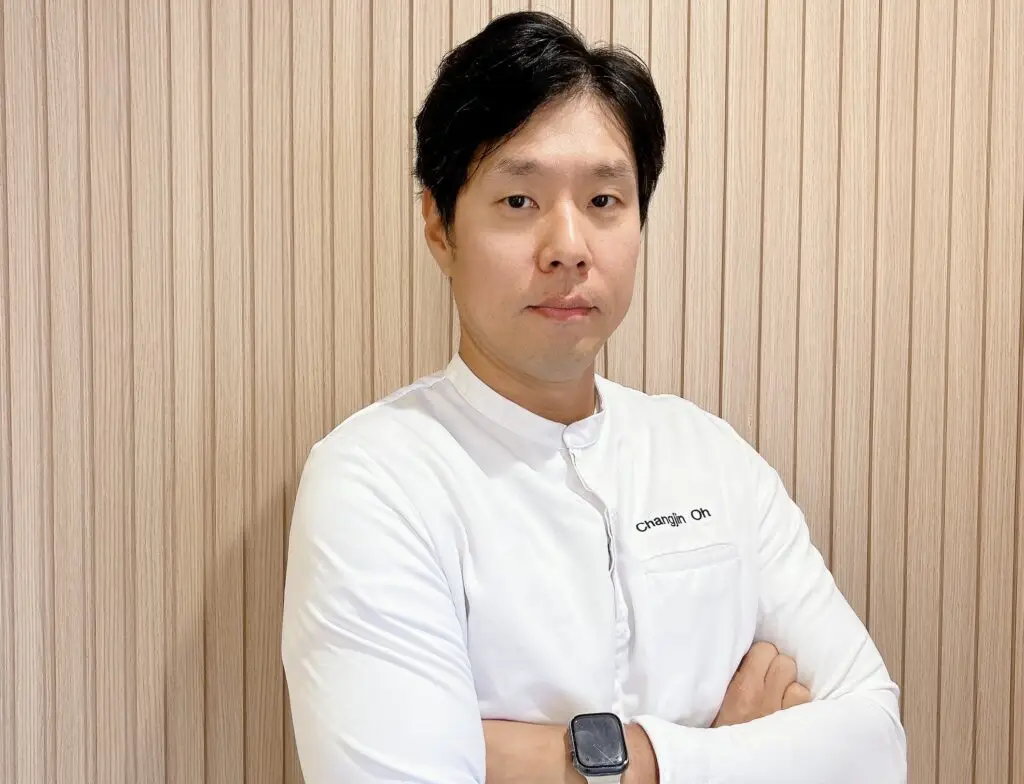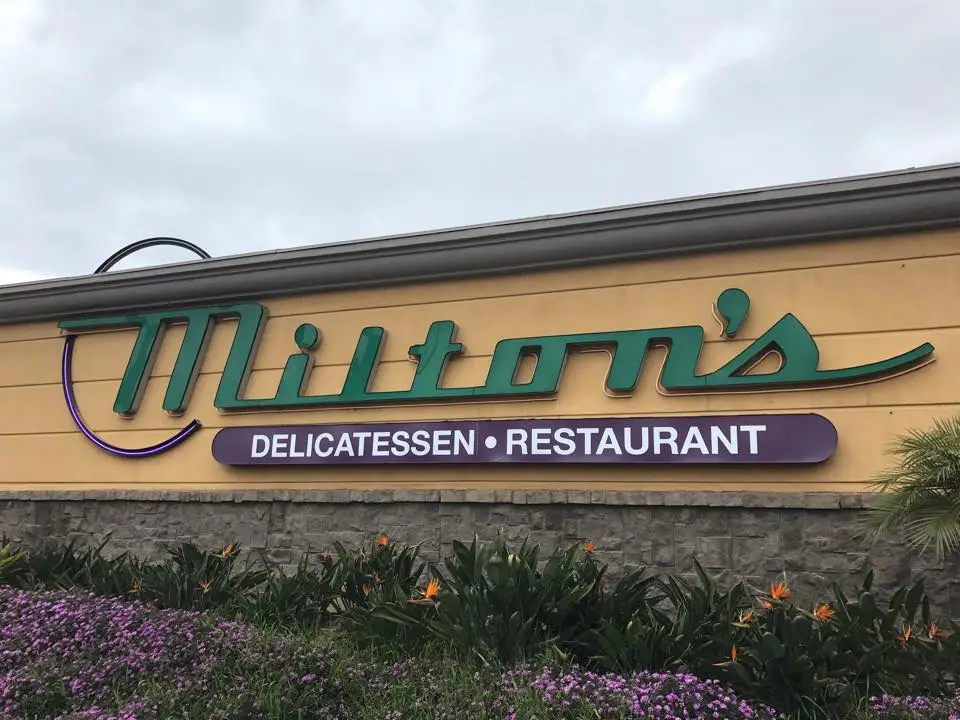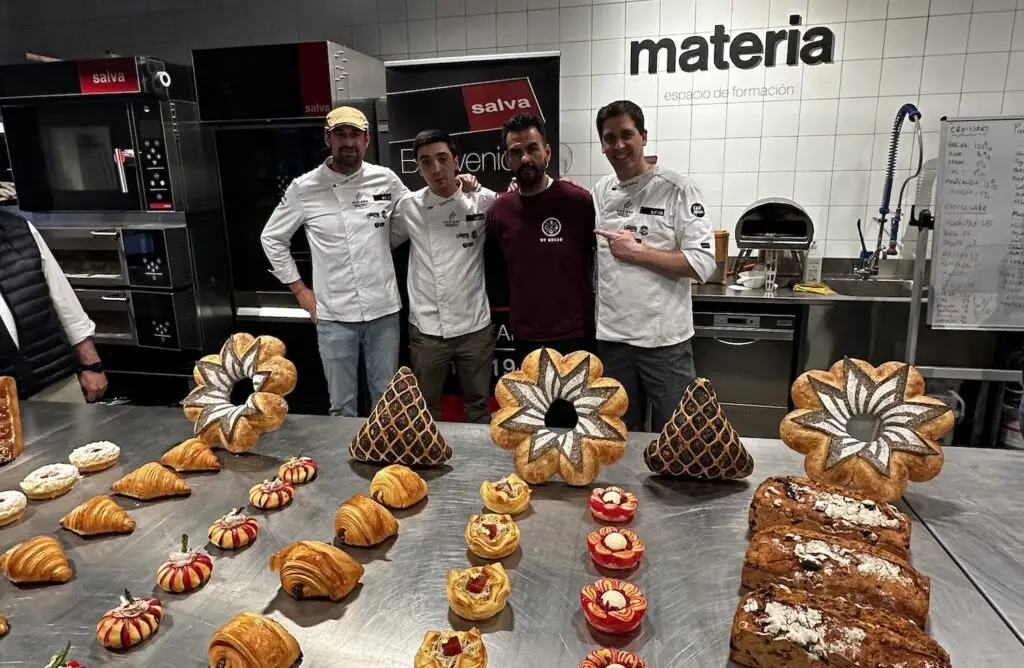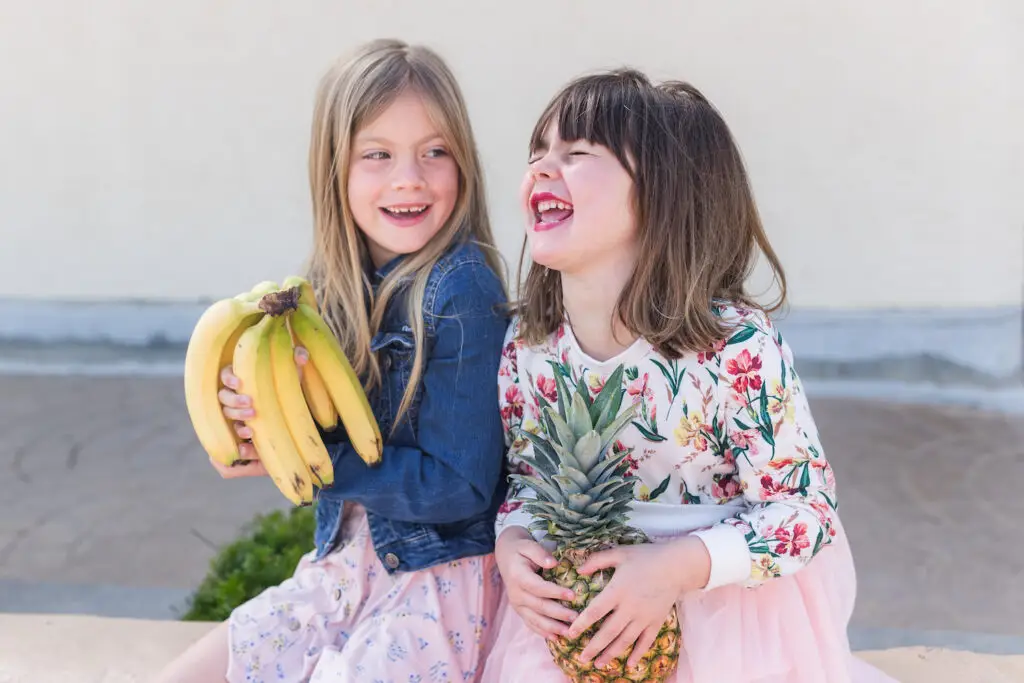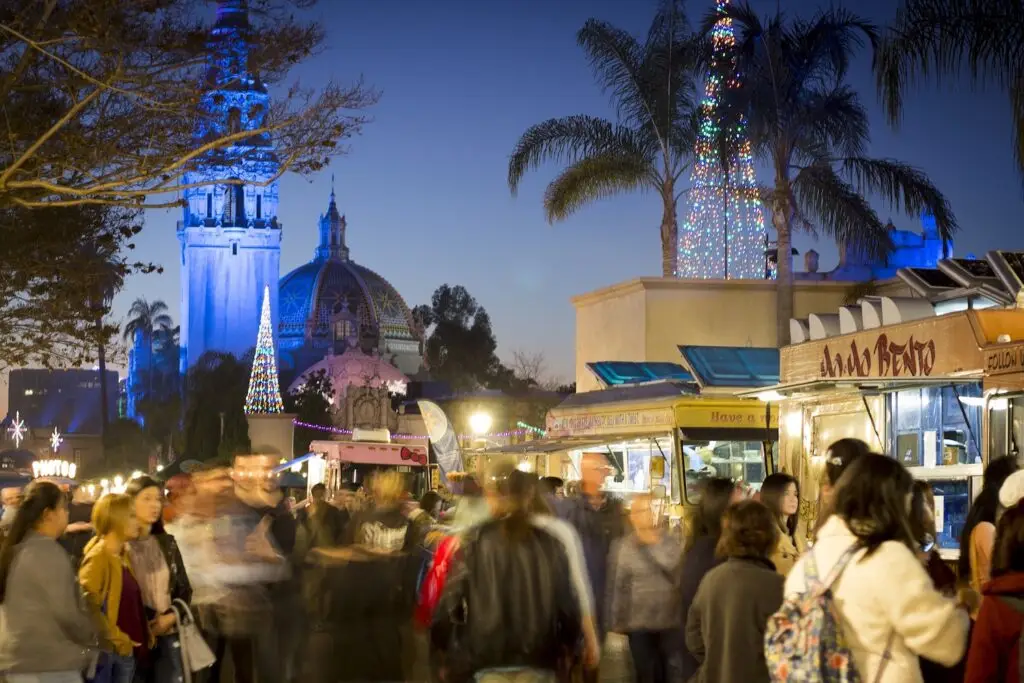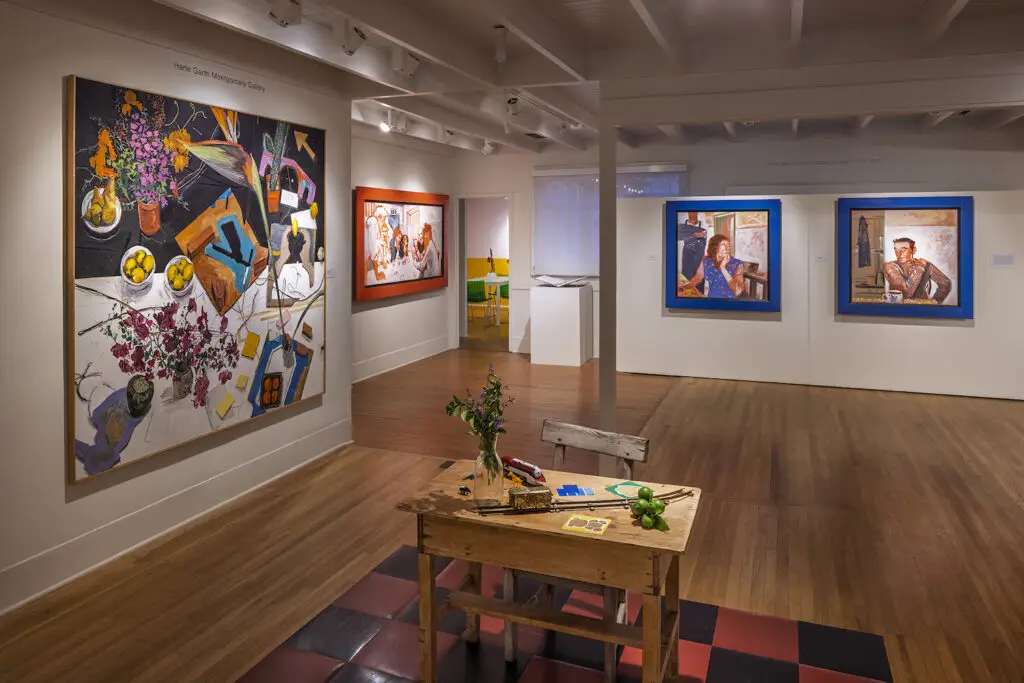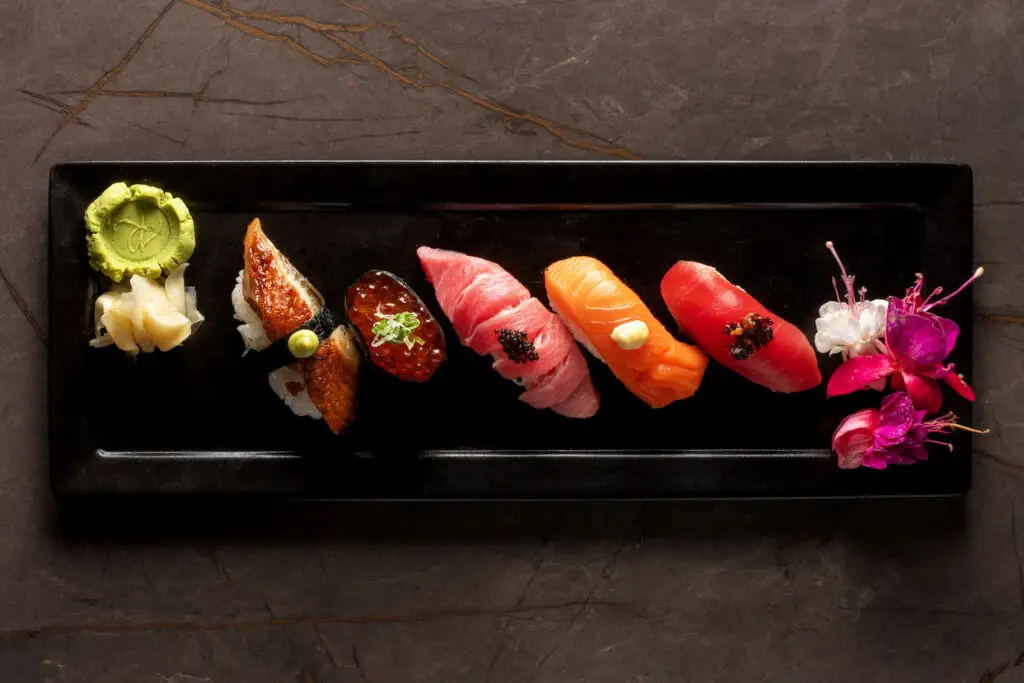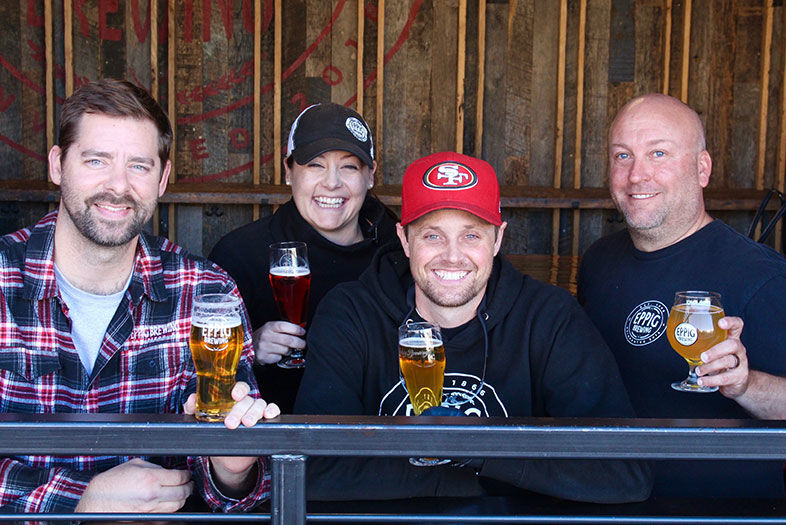I’m still not exactly sure what the magic formula is, but every once in awhile a new brewery opens up and it’s immediately and lovingly embraced by the beer-drinking public. Such was the case with North Park’s Eppig Brewing a little more than a year ago.
As far as I can tell, the magic formula doesn’t require any specific kind of location or incredible decor, nor does it require fancy ad campaigns or public relations events. I’ve seen it happen with brewers who were already well known, but I’ve seen it happen just as often with brewers who were not. For sure, the magic formula includes brewers with top-notch brewing skills and an instinct for the styles and flavors people want to drink. It also includes the making of great beer.
The team at Eppig includes two former brewers from Ballast Point and a business-savvy husband-and-wife team who are passionate about beer (in her case, the passion goes back 150 years to her great-great grandfather and his brother who established a brewery in Brooklyn, New York, in 1866). In just a little more than a year, Eppig Brewing has distinguished itself not only for its quality, but also for its variety and its ability (and willingness) to include less common styles in its regular rotation.
I recently gathered co-founder Stephanie Eppig, brewer Nathan Stephens, and brewer Clayton LeBlanc for a chat (Stephanie’s husband, co-founder Todd Warshaw, was tending to various brewery maintenance issues). Sipping on a light, crisp, perfectly balanced West Coast Blonde called Civility, I talked with the team about lessons learned in their debut year, how history has informed what they do, and what’s in store for the year ahead.
Ok, so your first year is behind you. What would you say were the biggest surprises of the past twelve months?
Clayton: No surprises at all! Everything went exactly according to plan! [Wink emoji goes here.]
Nathan: I’d say our Japanese Lager was one of the biggest surprises to me. When you think of it, that style was traditionally made by large mass-production breweries. Then we took that style and gave it our little twist by having a little more hops on the finish and actually making rice the featured ingredient, where you could taste it. I thought it was an awesome beer and, apparently, a lot of other people did too.
Stephanie: Over the past year, we learned a lot of things and people have taught us a lot of things—being in the beer business and experiencing it has been completely different from what I originally had thought it would be like. For me, I was very surprised by how supportive the rest of San Diego beer industry and the beer community has been. For other breweries to recommend Eppig when guests ask where they “have to” taste next, and to send them to our tiny little space here on El Cajon Boulevard, that’s been very surprising to me. What’s not surprising, however, is why: It’s the relationships Clayton and Nathan have built since their time back at Ballast and the beers that are coming out of our brewery. That’s not the surprise at all.
What would you say were the major snags you hit in your first year here?
Stephanie: Most of the major snags had to do with the space itself, like not having enough room to keep up on production of beers that people love and are asking for. We have to keep a lot of our beer off-site because we don’t have space for it here; and then somebody wants a keg, and we don’t have it here, and so we’re not able to get it to them that day. So, we’ve had a lot of production snags that hopefully will be solved from here on out.
Nathan: More logistical issues than you’d think for a space this size. You’re basically playing Tetris every day to get everything done.
Clayton: We’d sure like more square footage so we could keep more things in stock. But we knew what the square footage was when we moved in.
Let’s talk for a minute about your Ballast Point roots. Nathan and Clayton: You both were at Ballast for a long time. What would you say you brought from your Ballast experience to what you’re doing here?
Clayton: The Scripps Ranch experience from Ballast was all about immense growth happening, essentially the whole time we were there. And then there were all the experiences that came from that; not enough people, yet we need to make more beer and in a shorter amount of time. And then there’s the equipment breaking and it needs to be fixed and you have to come up with creative solutions to get around problems because it’s three o’clock in the morning. All those experiences made all the events here much easier in the sense that we had found a lot of workarounds from the Ballast days that can only come from the experience of going through it. We were there for a while, but only about 5 years, and if there hadn’t been so much growth and so much brewing going on during that period, we wouldn’t have seen all the things that we had seen. And we did it all with just a few guys. I mean, Nathan opened the Little Italy brewery. So all that experience has definitely benefited us here. We’re convinced that nothing can break that we can’t just work around.
Nathan: I would say one of the biggest things we brought from Ballast was discipline. We were just expected to get everything done and more, especially at Scripps Ranch because that was the workhorse before Miramar opened. So I got a taste of both sides of that going into Little Italy, where there were some different issues, like coming up with a schedule for the brewery and coming up with new recipes, and sourcing ingredients. So, between Clayton and myself, we got a lot of the skills that are needed to open a brewery—at least from the brewing side.
What about the recipe side? And the styles side? Were there types of beers you grew to love at Ballast that you brought over to here?
Clayton: You mean other than Sculpin? [Laughs] Like any chef who’s worked in a kitchen and then moves to his own restaurant, we kind of all have the same ingredients available to us. Nathan, having done a lot of the R&D stuff—he got to play with, and work with, a lot more ingredients than I ever did—that gives you a deeper playbook or recipe book. Then we got to come here, where there are no constraints and we can kind of make whatever we want. At the same time—because we’re also not completely insane—we also want to make good tasting beer that everyone can enjoy drinking, so that kind of makes for a nice balance.
Nathan: You find ingredients that you love and combinations you love. And I’ve always had a lot of things I never got around to doing and I always wanted to try. Here, once in a blue moon when we have an open tank, I can do something that maybe I’ve had in my back pocket for a while.
Did you ever feel pressure, with people knowing your Ballast Point background, that the hoppy beers were expected to be a certain way?
Nathan: We felt an expectation of quality.
Clayton: For me, I think there was more pressure on ourselves. Like, we’ve told people where we come from so we better bring it. As far as the beers: I don’t want to make the same beers [we made before], that would be quite bad form.
Talk to me a little bit about how you two work together as a brewing team. Do you collaborate on every batch and work everything together?
Nathan: For the most part. It kind of depends which beer we’re talking about. We’ll go back and forth on a recipe—say, I’ll put together a rough draft of something and then Clayton will give feedback and make suggestions.
Clayton: Nathan’s really the head chef. He pitches ideas and then we kind of stir them around in our heads. I’ll pitch ideas if I have them, but otherwise it’s mostly Nathan.
Are there specific influences or sensibilities you think each of you brings to the mix usually? You know, like Clayton is Lennon and Nathan is McCartney?
Clayton: I think you nailed it right there!
Does one of you tend to lean more toward the malty side or the crazy ingredients side?
Nathan: We have a lot of overlap, I would say, with what we like. So, for the most part, it makes it very easy to figure out a direction we want to go. I guess the way I would say it is that I never really have to “sell” anything to him. Stylistically what we like to drink is fairly similar.
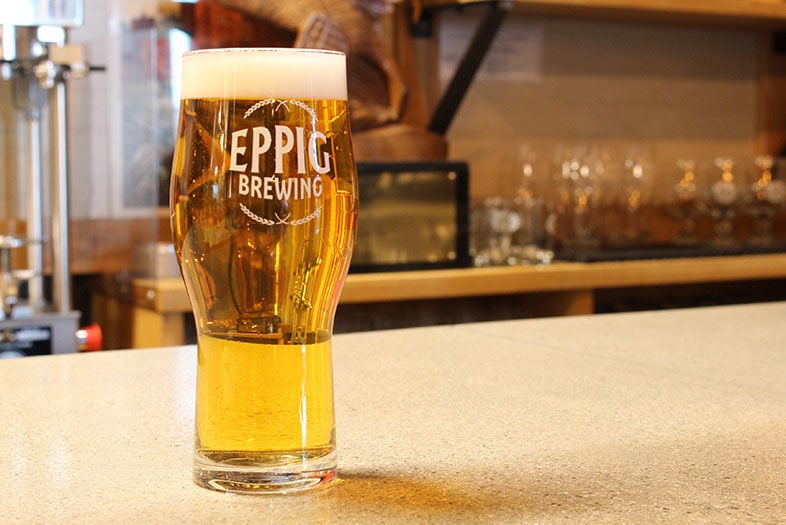
Have a Beer with the Eppig Brewing Team
Eppig’s Festbier is just one of numerous lager styles the brewery produces on a regular basis. | Photo: Bruce Glassman
There’s an interesting history to the Eppig family and their background in brewing. I know that’s a big part of what you do here and a big part of your identity. Can you talk a little bit about that history?
Stephanie: Sure. So my great-great grandfather and his brothers emigrated from Germany in the 1850s and settled in Brooklyn, New York. They ended up opening their own family brewery in 1866. They opened the Leonhard Eppig Germania Brewery and they brewed nothing but lagers for about five years. That truly was a great inspiration for us. And one of the great synergies in bringing on Nathan and Clayton is that they helped to develop the lager program at Ballast Point and they developed our lager program, which is the Natural Bridge Lager Series. It’s been really special to be able to share our lagers with people and to have that connection back to the original Eppig brewing heritage.
Are they original recipes from back then?
Stephanie: No. They’re not.
Are there any original recipes that survived, do you know?
Stephanie: We don’t have any. We’ve been through everything, but haven’t found any.
Nathan: But we can interpret and put our interpretation on things. Brewing in the 1800s was not like it is today. The total number of raw ingredients you had available was tiny compared to today. You have a rainbow of hops and malts to play with now, whereas, back in the day, you just did with what you had.
Stephanie: One of the standout lagers from last year was the Vienna lager, which was a pre-Prohibition style lager. We try to have a range of different styles of lagers from different points in time that tie back to our history, but we’re not always able to keep all the same beers on at the same time.
The original Eppig Brewing was in business until when?
Stephanie: Officially, until Prohibition. But every good story, as you know, has gangsters involved somehow. The famous gangster Dutch Schultz partnered up with the Eppig sons of the founders and they went underground. So Leonhard Eppig’s brewery was pushing beer during Prohibition. That is also the rumored reason why the family lost Eppig Brewing in the 1930s. They made it through Prohibition, but afterwards Dutch Schultz took it over and the family lost everything. My grandfather was about twelve at the time, and he lived in Brooklyn, and his father was the brewery’s bookkeeper, so we still have a lot of the original documents. That was a very difficult time, but also a source of pride for the Eppig family. When I was growing up, I heard all the stories. And we still had the original glass bottles and bottle caps. To be able to bring that back in a modern way with our unique stamp has been really cool. Our very first barrel-aged release, for example, pays tribute to that history. The bottle cap on top is the same as the original Eppig Brewing bottle cap.
When did that spark of inspiration hit you, when you realized you wanted to open a brewery and then incorporate your family’s history into it?
Stephanie: We always had a deep appreciation for the craft and we had always wanted to bring the family brewery back, but so many people have that same kind of thought—that they want to do something, but they don’t actually jump off the cliff. Often they’re second-guessing themselves because they don’t have all the skills to do it. We were not brewers, and we’d never pretend to be the brewers here, so I wanted to leave that to the professionals. If we’re putting my family’s name on it, I want it to be the best and the highest quality. Nathan and Clayton are the perfect fit to be able to do that for us. The decision to start a brewery was a moment between Todd and me where we were talking about what we wanted to do with the rest of our lives and how we could have a career we would be happy with, doing what we love to do. That’s when we decided to take the chance. And it was really fortunate that we had met Clayton about a year or two before we had that first conversation.
How did you first meet Clayton?
Stephanie: We met through mutual friends. It was at a barbecue. We learned that Clayton was a brewer at Ballast Point, but it was nothing more than social at first. We’d run into each other and catch up, but we never thought any more of it—until we seriously started talking about opening a brewery. We thought, “We don’t brew beer, so how are we going to do this?” That’s when Todd said, “Clayton.” It was a very natural idea.
Clayton: Yeah, it was like a nice long courtship in a sense, because it started very casually. I mean, I was a brewer. It was my job. Of course, in the back of every brewer’s mind is the idea of opening your own place, and our conversations led to my hearing the story of the Eppig family and I thought that was pretty cool. And I started to think about how we could do that. When we finally put it all together we had a moment when we said, “So, do we really want to do this?” We all decided we should, even though we were still kind of getting to know each other in some ways.
Did you formulate a clear idea of what kinds of beers you wanted to do at that point?
Clayton: Some of the history was kind of a motivator. We thought, “Hey this doesn’t exist, there’s not a lot of lagers produced out there.” That idea was combined with the fact that Nathan was part of the Ballast team that was developing how to make lagers effectively. Never at any time did we say anything like, “We’ll never make an IPA,” or anything like that. We did come from the house built by IPA so we wanted to have some fun with those as well.
Plans for the future: You have a tasting room opening in Point Loma soon, correct? What are some of the things you’re looking most forward to once that is up and running?
Stephanie: I think the vision has always been “Beer Garden.” And also outdoor, drinkable, approachable beers, because here in San Diego we have summer weather almost all year. To be able to create that kind of atmosphere out along the water and to be able to share beers with an audience down there, I think, is the vision we all share for Point Loma.
Nathan: If you’ve lived in San Diego for any amount of time and you’re a beer drinker, you’ve probably been struck by how few options there are of places that take advantage of the three most famous things here, which are beer, weather, and water. So, if we pull this off correctly, it’s going to be a pretty spectacular venue. And serving the styles of beers that we make in that very unique location right on the water there—right on the harbor with the skyline of downtown San Diego in the background—it’s going to be incredible.
One last question—and it’s okay to brag here: There are about 150 breweries in this town. You guys were number 130, and there are a lot of breweries that have been around longer than you have that don’t enjoy the kind of support or notoriety or accolades from other folks in the beer community that you have—or the support from craft beer fans. So what do you think it is that you guys are doing particularly right?
Nathan: I would say a big part of it for us was the fact that, even though we’re a new brewery, we’ve been in the business and working and perfecting our craft for years now. I went to school and studied brewing, and we worked our tails off during a crazy growth phase at Ballast, so we’ve been in the trenches for a long time. And now we just happen to be in a new venue where we get to call the shots and get to make the type of beers we want to make. And we also get to be involved in every decision as the brewery moves forward. So a lot of it is just the knowledge you learn through experience and the fact that this is what I want to do with my life. It’s what I love.
Stephanie: For me, not having the beer background that Nathan and Clayton have, it’s not only the beer quality but also the quality decisions that are being made. If they say a beer is going to be ready on Tuesday, I’m not allowed to promote it ahead of time, because if they taste it on Tuesday morning or hold it up and see it needs another day to clarify (because there’s no filtering) then we give it an extra day. There’s no cutting corners on the ingredients or during the brewing process. Every beer gets the time that it deserves. That way it’s the freshest and the best every time you drink it. That’s something that’s really special and it’s something that not every brewery has the luxury of being able to do.
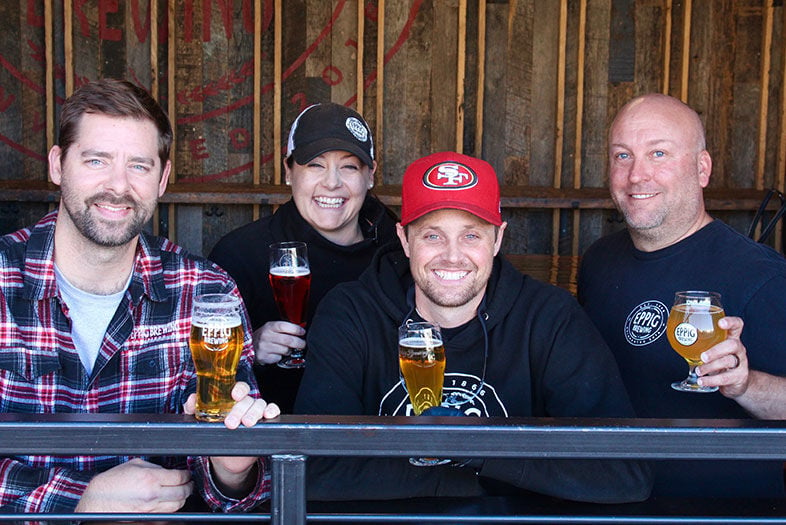
Have a Beer with the Eppig Brewing Team
PARTNER CONTENT
Eppig team members (left to right): Clayton LeBlanc, Stephanie Eppig, Nathan Stephens, and Todd Warshaw. | Photo: Bruce Glassman
